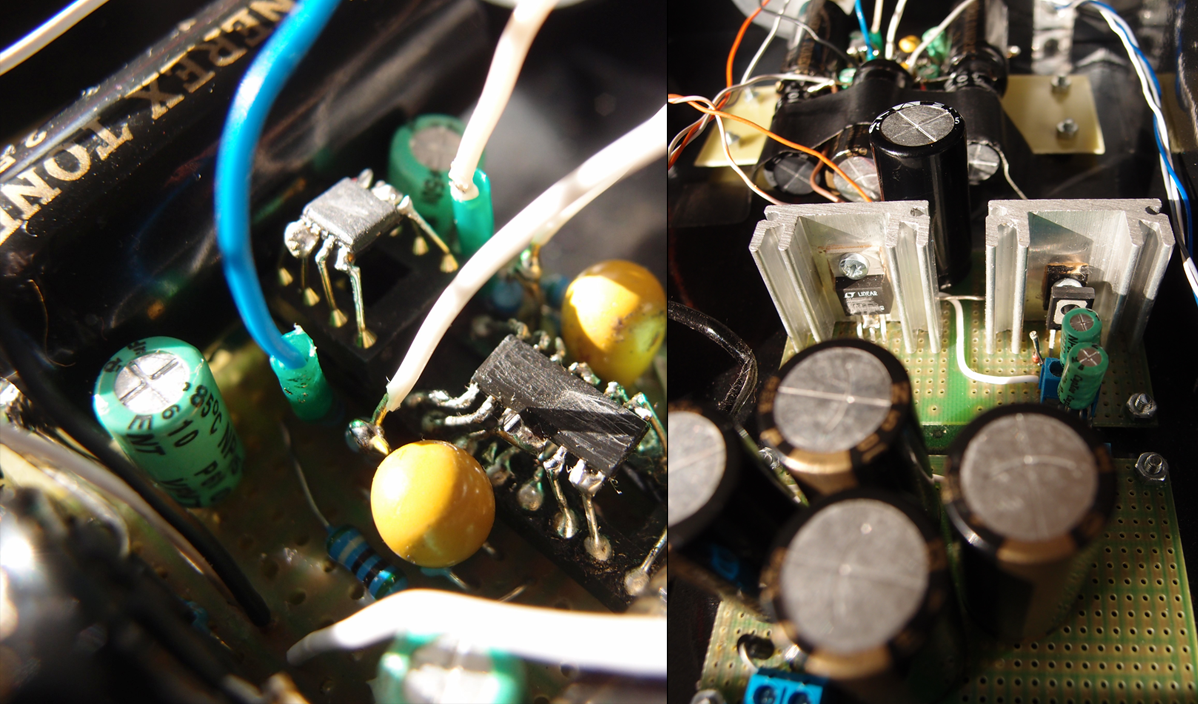 |
|
|
Ear Stream founded by Michal Wyroba is a Polish company. Michal is one of those lucky chaps who transformed his audio hobby into a profession. He produces audio cables, power supplies and headphone amplifiers. He also modifies gear for his customers. On the headfi scene he became known for his entry-level Black Pearl amplifier. After enjoying success also with his Sonic Pearl model, here now comes the Sonic Pearl 2 to interest us today. I asked Michal for some back story. "Headphone amplifiers from Ear Stream are unique in circuit choices and assembly techniques. Both developed over several years of experimentation and endless hours of listening sessions and fine-tuning. The outward circuit simplicity is a result of selecting very sophisticated ICs which normally are dedicated to broadband cable networking apps. Their parameters fulfil far higher requirements on frequency response, slew rate and settling time than those dedicated to audio to give us really high fidelity of music reproduction with full bandwidth, dynamics and transient accuracy.
|
 |
"These goals are achieved with short and fast negative feedback loops for very low harmonic distortion, low output impedance and low TIM and intermodulation products. It should be mentioned that most disadvantages and negative sonics from negative feedback appear in circuits with long feedback loops where frequency response is often shaped to fix instabilities resulting from other unaddressed issues. There are no such issues in Ear Stream amplifiers." |
|
|
|
|
"To guarantee full exploitation of the parameters provided by the active parts of the circuit, our headphone amplifiers are equipped with fast and efficient power supplies. These are either batteries or dual-stage linear regulators built with specific goals in mind. First, no time constant or negative feedback loops. You will find no bandwidth-limiting capacitors or filtering inductors in our power supply circuits. These are particularly important for audio to prevent the power supply from oscillations and response delays when the load has a dynamic impedance. So the first stage of our regulation is a low-impedance discrete voltage follower whose reference is a Zener diode supplied from a minimalist current source. Such a circuit provides instant response to any change in the current sunk by the amplifier circuit. The second stage in the Sonic Pearl 2 amplifier is the best available LDO regulator preserving operational stability without capacitors at its input and output. This means there is no need to bypass its output with ceramic or tantalum capacitors. The output voltage is only trimmed to the desired level with further filtering applied by a single solid-state device adjusted with a single high-precision resistor.
"Another advantage of Ear Stream headphone amps is DC coupling from input to output combined with a single supply voltage. When you look at electron tube circuits, there is in most cases a single rail dedicated to supplying certain circuit sections. In the Sonic Pearl 2, Black Pearl and Headonic this also is the case. The ‘floating’ ground has many advantages which are easy to explore especially in preamplifiers and headphone amps. The first of them is DC output impedance independent of AC impedance, which is important for the music signal transmission. In Ear Stream headphone amps, the DC impedance is high enough to keep your headphone safe in case a DC offset voltage appears because the output current is limited to below 30mA if not further limited by the headphone impedance itself. On the other hand, there are no input or output capacitors degrading the sound quality.
|
 |
"The assembly technique of Ear Stream headphone amplifiers should be considered as point to point despite the fact that you can see a printed circuit board supporting the components. Actually it has no other function. All the leads meet in the same soldering point and the only traces utilized are power supply rails and ground. Both are reinforced with bare wire and soldered to the whole surface. The results are the shortest possible signal paths between components due to the spatial arrangement and low impedance of connections with no traces involved in any signal conduction. The component selection is done on two levels - first are parts parameters, then comes thorough parts matching. Such a tuning might take several years when starting from scratch and the final result is twofold. On one hand, we obtain the optimal bill of materials and on the other hand we know which parts are bad to never be used in current and future designs. We don't look at prices. You will see that the Sonic Pearl 2 or Headonic amps are a mix of cheap and expensive parts whose selection wasn't driven my money. If you see other components in competitor’s amps like mostly electrolytic capacitors broadly advertised as good but don't find them in our amps, rest assured that we rejected them as not being good enough."
|
 |
|

|

|
|